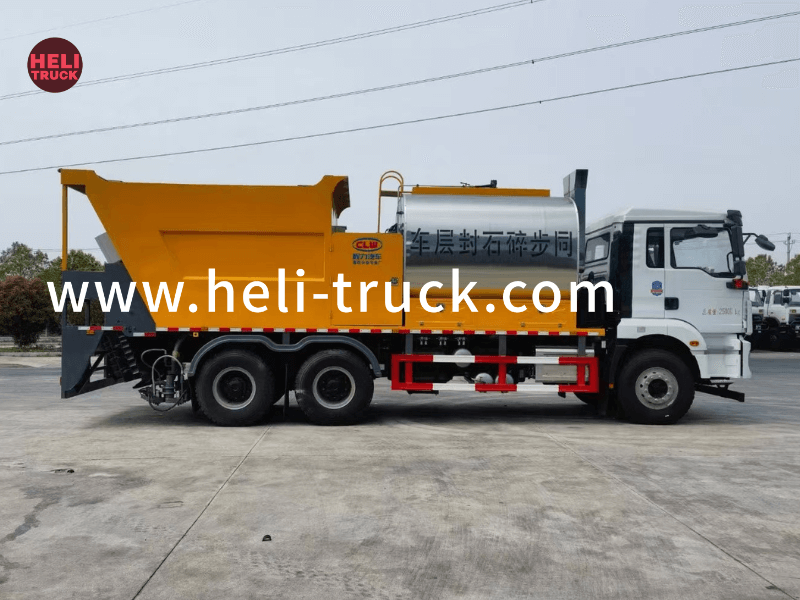Maximizing Efficiency Understanding Garbage Compactor Truck Capacity
Introduction Garbage compactor trucks play a crucial role in waste management systems, efficiently collecting and compacting solid waste to reduce volume and optimize transportation. One of the key factors that determine the effectiveness of these trucks is their capacity. In this article, we will explore the importance of garbage compactor truck capacity, how it impacts operational efficiency, the various types of compactor truck capacities available, and strategies to maximize their utilization. Understanding Garbage Compactor Truck Capacity Garbage compactor truck capacity refers to the volume of waste that the truck can hold before it needs to be emptied. water tank truck is typically measured in cubic yards or cubic meters and plays a critical role in determining the frequency of waste collection, the efficiency of the waste collection process, and the overall operational costs. The capacity of a garbage compactor truck is influenced by several factors, including the size and design of the compaction body, the type of waste being collected, and the specific requirements of the waste management system. Trucks with larger capacities can collect more waste before needing to unload, reducing the number of trips required and improving operational efficiency. Types of Garbage Compactor Truck Capacities Garbage compactor trucks come in various capacities to suit different operational needs and waste management requirements. The most common types of compactor truck capacities include: 1. Small Capacity Trucks: Small capacity compactor trucks typically have a capacity of 5 to 10 cubic yards and are ideal for collecting waste in residential areas, narrow streets, or tight spaces where larger trucks cannot access. These trucks are compact and maneuverable, making them suitable for urban environments with limited space. 2. Medium Capacity Trucks: Medium capacity compactor trucks have a capacity ranging from 10 to 20 cubic yards and are commonly used for commercial waste collection, such as in shopping malls, office buildings, and industrial facilities. These trucks strike a balance between size and capacity, making them versatile for various waste collection applications. 3. Large Capacity Trucks: Large capacity compactor trucks are designed to handle high volumes of waste and typically have a capacity of 20 cubic yards or more. These trucks are suitable for municipal waste collection, landfill operations, and other large-scale waste management activities where a significant amount of waste needs to be collected and compacted efficiently. Maximizing Garbage Compactor Truck Capacity To maximize the efficiency and effectiveness of garbage compactor trucks, it is essential to optimize their capacity utilization. Several strategies can be implemented to ensure that compactor trucks operate at their full capacity and contribute to a more sustainable waste management system: 1. Route Planning and Optimization: Efficient route planning is crucial to maximizing garbage compactor truck capacity. By optimizing collection routes based on factors such as waste generation rates, traffic conditions, and geographical locations, trucks can collect more waste in a single trip and reduce the overall transportation costs.  2. Proper Waste Segregation: Proper waste segregation at the source can help increase the capacity utilization of compactor trucks. By separating recyclable materials, organic waste, and hazardous waste before collection, trucks can carry more waste of a similar type, increasing compaction efficiency and reducing the need for multiple trips. 3. Regular Maintenance and Inspection: Regular maintenance and inspection of garbage compactor trucks are essential to ensure that they operate at their optimal capacity. Routine checks of compaction mechanisms, hydraulic systems, and safety features can prevent breakdowns and downtime, allowing trucks to continue collecting waste efficiently. 4. Employee Training and Safety: Proper training of truck operators and waste management staff is essential to maximizing garbage compactor truck capacity. By educating employees on best practices for waste collection, compaction techniques, and safety protocols, trucks can be operated more effectively, ensuring that they reach their full capacity potential. Conclusion Garbage compactor truck capacity is a critical factor in the efficiency and effectiveness of waste management systems. By understanding the different types of compactor truck capacities available, implementing strategies to maximize capacity utilization, and prioritizing proper maintenance and employee training, organizations can optimize their waste collection operations and contribute to a more sustainable and environmentally friendly waste management process. Maximizing garbage compactor truck capacity not only improves operational efficiency but also helps reduce costs, minimize environmental impact, and enhance overall waste management practices.
2. Proper Waste Segregation: Proper waste segregation at the source can help increase the capacity utilization of compactor trucks. By separating recyclable materials, organic waste, and hazardous waste before collection, trucks can carry more waste of a similar type, increasing compaction efficiency and reducing the need for multiple trips. 3. Regular Maintenance and Inspection: Regular maintenance and inspection of garbage compactor trucks are essential to ensure that they operate at their optimal capacity. Routine checks of compaction mechanisms, hydraulic systems, and safety features can prevent breakdowns and downtime, allowing trucks to continue collecting waste efficiently. 4. Employee Training and Safety: Proper training of truck operators and waste management staff is essential to maximizing garbage compactor truck capacity. By educating employees on best practices for waste collection, compaction techniques, and safety protocols, trucks can be operated more effectively, ensuring that they reach their full capacity potential. Conclusion Garbage compactor truck capacity is a critical factor in the efficiency and effectiveness of waste management systems. By understanding the different types of compactor truck capacities available, implementing strategies to maximize capacity utilization, and prioritizing proper maintenance and employee training, organizations can optimize their waste collection operations and contribute to a more sustainable and environmentally friendly waste management process. Maximizing garbage compactor truck capacity not only improves operational efficiency but also helps reduce costs, minimize environmental impact, and enhance overall waste management practices.